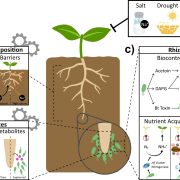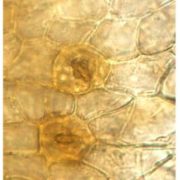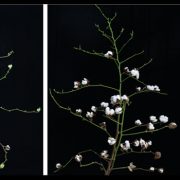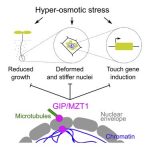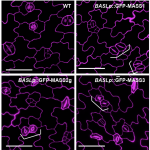Intertwined signatures of desiccation and drought tolerance in grasses (PNAS)
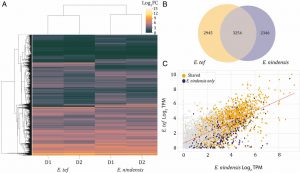 Desiccation tolerance (i.e., the capacity of surviving with very low water content) is widespread in seeds and pollen, but quite rare in vegetative organs. Most authors agree that in angiosperms it originated multiple independent times from rewiring seed desiccation tolerance pathways. Here, Pardo et al. sequenced the genome of Eragrostis nindensis, a species from a genus that includes both desiccation-tolerant and -sensitive species and crops, and compared gene expression under water deficit with other desiccation-tolerant and -sensitive grass species. Interestingly, the authors found seed-related genes upregulated in both desiccation-tolerant and -sensitive species under drought. As a result, they challenge the current hypothesis for desiccation tolerance origin and suggest that seed-related genes, rather than participating only in desiccation tolerance responses, are involved in general drought tolerance responses. However, the genes related to preventing photooxidative damage had different expression levels between desiccation-tolerant and desiccation-sensitive species. Since a role for photooxidative damage in desiccation tolerance has been previously reported, the authors suggest these genes are crucial for the evolution of vegetative desiccation-tolerance. Moreover, they consider these findings are promising for future efforts to improve stress resilience in crops (Summary by Carlos A. Ordóñez-Parra @caordonezparra) PNAS 10.1073/pnas.2001928117
Desiccation tolerance (i.e., the capacity of surviving with very low water content) is widespread in seeds and pollen, but quite rare in vegetative organs. Most authors agree that in angiosperms it originated multiple independent times from rewiring seed desiccation tolerance pathways. Here, Pardo et al. sequenced the genome of Eragrostis nindensis, a species from a genus that includes both desiccation-tolerant and -sensitive species and crops, and compared gene expression under water deficit with other desiccation-tolerant and -sensitive grass species. Interestingly, the authors found seed-related genes upregulated in both desiccation-tolerant and -sensitive species under drought. As a result, they challenge the current hypothesis for desiccation tolerance origin and suggest that seed-related genes, rather than participating only in desiccation tolerance responses, are involved in general drought tolerance responses. However, the genes related to preventing photooxidative damage had different expression levels between desiccation-tolerant and desiccation-sensitive species. Since a role for photooxidative damage in desiccation tolerance has been previously reported, the authors suggest these genes are crucial for the evolution of vegetative desiccation-tolerance. Moreover, they consider these findings are promising for future efforts to improve stress resilience in crops (Summary by Carlos A. Ordóñez-Parra @caordonezparra) PNAS 10.1073/pnas.2001928117



